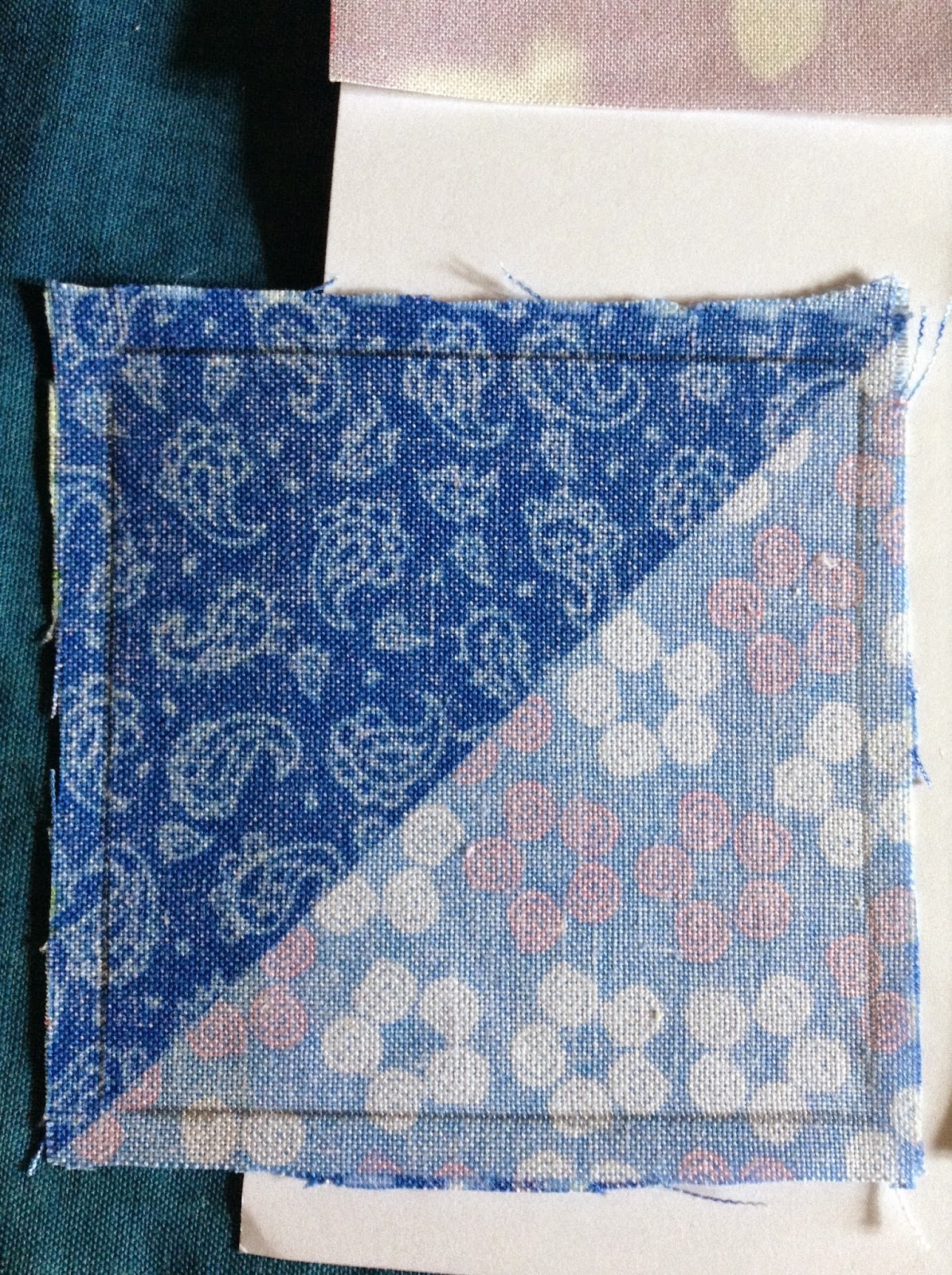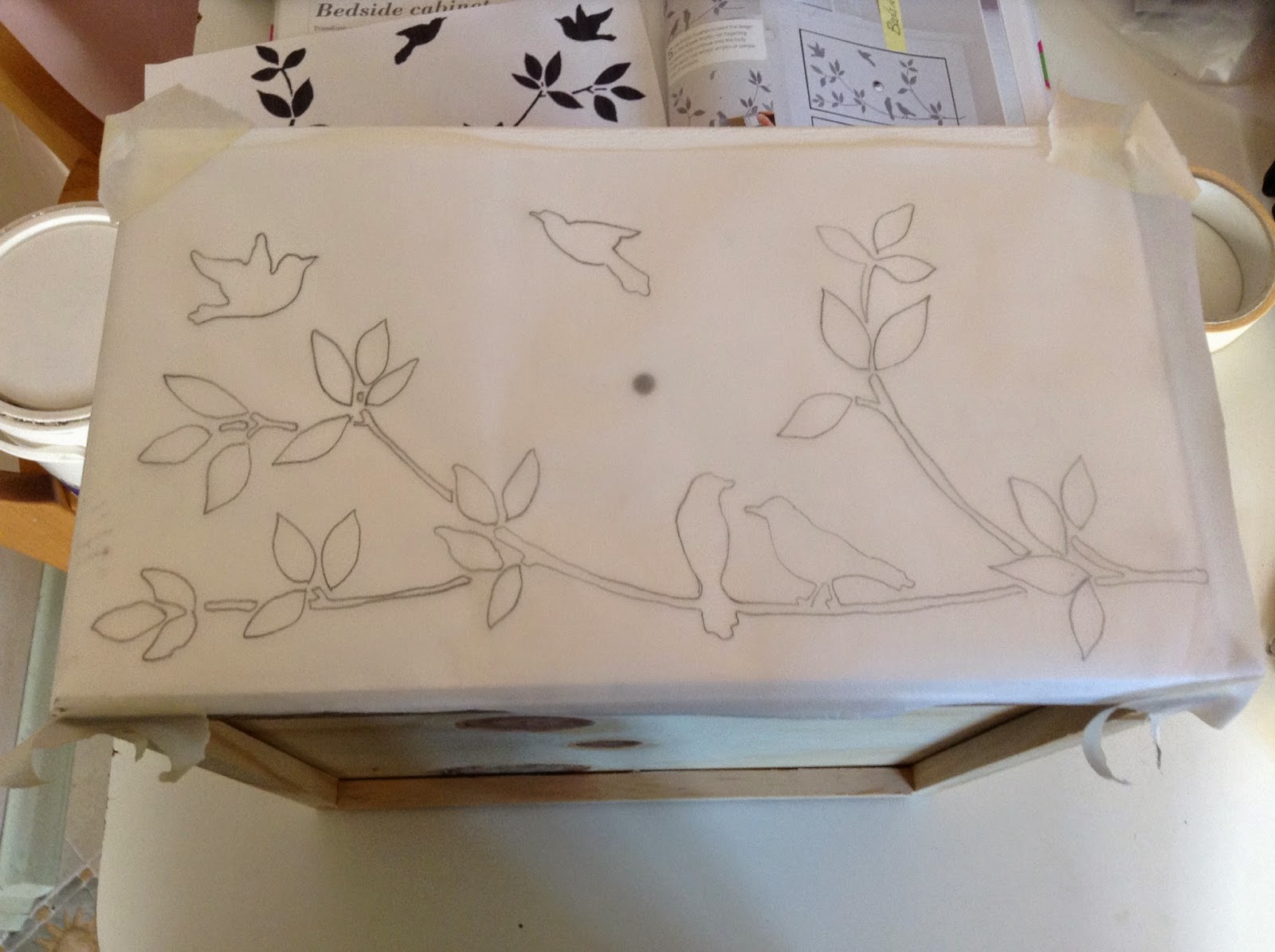My problem was that I had lots of fabric left over from my lampshades, yet still not enough to make something substantial. Solution: patchwork! The best way to use up scraps of old fabric. I decided to make a table mat, as I needed one to cover my cabinet, but you can follow exactly the same instructions to make a pillow: just stuff it with pillow form before you sew the final edge up. In fact, you can use pretty much the same steps to make a bag, wall hanging, sachet or napkin.
You will need:
Ruler
Stiff card
Pencil/ballpoint pen
Large craft scissors
A selection of fabrics
Small needle and thread
Pins
Iron
Step one: Triangles
You could just make squares, but why when you could do triangles??? Also, triangles mean lots of interesting design opportunities. The final square will look a bit like this:
Which could, for example, be arranged with a few more identical squares to look like any of these, or more:
Anyway, the idea is clear. Choose two colours for the triangles and play around with making a pattern, thinking about the dimensions of the final piece. (Each square will be 10x10cm, though size is lost in seam allowance).
Count up the number of squares you need (mine uses twenty)
 |
| My design |
Make two piles for the two colours. Take one pile and flip them over to the 'wrong' side. Then draw a diagonal line crossing the square, making sure if you use a pen that it doesn't bleed through. Take this line and draw two more on either side, 0.6cm away from the central line.
Pin together two squares of different colours, bright sides facing each other.
Using a simple running/line stitch, sew along the two outer lines that you drew. Then cut down the middle line: this will give two sets of triangle-squares. Fold the seam towards the darker colour and press down on both sides with a quilting iron or hot clothes iron. Repeat for all your squares.
Flip each one over to the 'wrong' side. Make another square template, 7x7cm large. Place this in the centre of your square fabric piece and draw around with a pencil. This will serve as the 'seam allowance line' and tell you where to sew. (You can make it slightly larger for smaller seams, but take into account fraying etc.) Do this for all your squares.
Arrange your squares in your pattern, the right way up.
Number each 'strip' - you can use bits of paper pinned on to the top square in each column. This will stop confusing mistakes later when assembling.
Step two: Assembly
Flip the second square of strip 1 up onto the first square of the same strip, so the bottom of 1 aligns with the top of 2. Sew along the line you drew, making sure it lines up on both sides - this will ensure all the final squares are the same shape. See my lovely illustrated :D diagram if that made no sense:
Repeat with all the squares of the strip, flipping three onto two and four onto three. Turn the strip over and press all the seams towards the top.
Now you can assemble the block. Flip strip 2 to the left, onto strip one, so the bright sides are together. Rotate the strip so that the edge you want to sew along (shown by the arrows) is at the top. Pin the two together. Then use a running stitch to sew the strips together, following the lines.
Unfold the strip and repeat with 2&3, 3&4.... Then press the seams down from both sides, giving you the block.
Step three: adding a boarder
Cut a length of fabric, about 4.5cm wide, that is longer than the perimeter of your piece. Mark out a seam allowance (on the 'wrong' side) on either edge, once again 0.6cm from the edge of the fabric.
Place your block on the table and pin one edge of the strip to any edge of the block, bright sides together. Trim off the extra length and repeat for the opposite edge.
Pin in place, lining up the top seam line with the seam line of the blocks. Sew along this line.
 |
| These keep getting better, huh? :D |

Unfold the boarders and press.
Repeat for the last two sides, except this time extend all the way out to the edges of the other boarders: (It's a simplistic drawing, whatever).
Step 4: Backing
Pin the bright sides together and cut the backing fabric down more carefully to size.
Pin three sides and leave the forth open. Sew along the seam line of the boarders, not the block, of these three sides. Use a running stitch again. When you're finished, turn the piece inside out to give the correct sides. Poke the fabric through to the corners.
Use a whip stitch to sew up the final edge and complete the piece!
When you use this stitch, fold the edges of both pieces in slightly and start from the inside, so that the knot is tucked away. To stitch, poke the needle up through both layers of fabric. Then, bring it round and back through the same side. This will wrap the stitches around the fabric. Iron both sides to finish.






































































